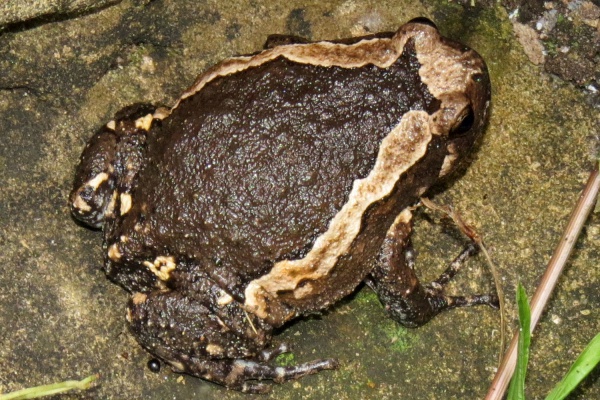Facts About Banded bullfrog
The banded bullfrog, also known as the Asian painted frog, rice frog, bubble frog, or chubby frog in the pet trade, is a captivating member of the microhylid family. These frogs are easily identifiable by their round bodies, mahogany-brown backs, cream-colored bellies, and distinctive side stripes. Males typically have darker throats, while females are generally larger. They can reach up to 8 cm in length and have a lifespan of approximately 10 years.
Native to mainland Southeast Asia, banded bullfrogs inhabit a variety of environments such as forest floors, rice fields, and even human dwellings. They are voracious eaters, consuming a wide array of insects including flies, crickets, moths, grasshoppers, and earthworms. During the day, they hide under leaf litter, emerging at night to feed. When threatened, they employ a unique defense mechanism: puffing up their bodies and secreting toxic substances. They can also survive dry conditions by burying themselves until the rains return.
Banded bullfrogs have become invasive in several regions, including the Philippines, Guam, Singapore, Borneo, and Sulawesi. Sightings have also been reported in Australia and New Zealand. During the monsoon season, males call from pools of water to attract females, and their tadpoles can metamorphose into frogs in just two weeks.
In the wild, these frogs primarily consume ants, with the ability to eat up to several hundred in a single night. They are popular in the pet trade but require specific care. They are sensitive to chlorine in water and need high humidity levels, with a temperature range of 80-85 °F. Suitable substrates for their habitat include peat-soil mixes or potting soil with sphagnum moss. While mealworms can be offered occasionally, they should not constitute the primary diet.

 Indonesia
Indonesia